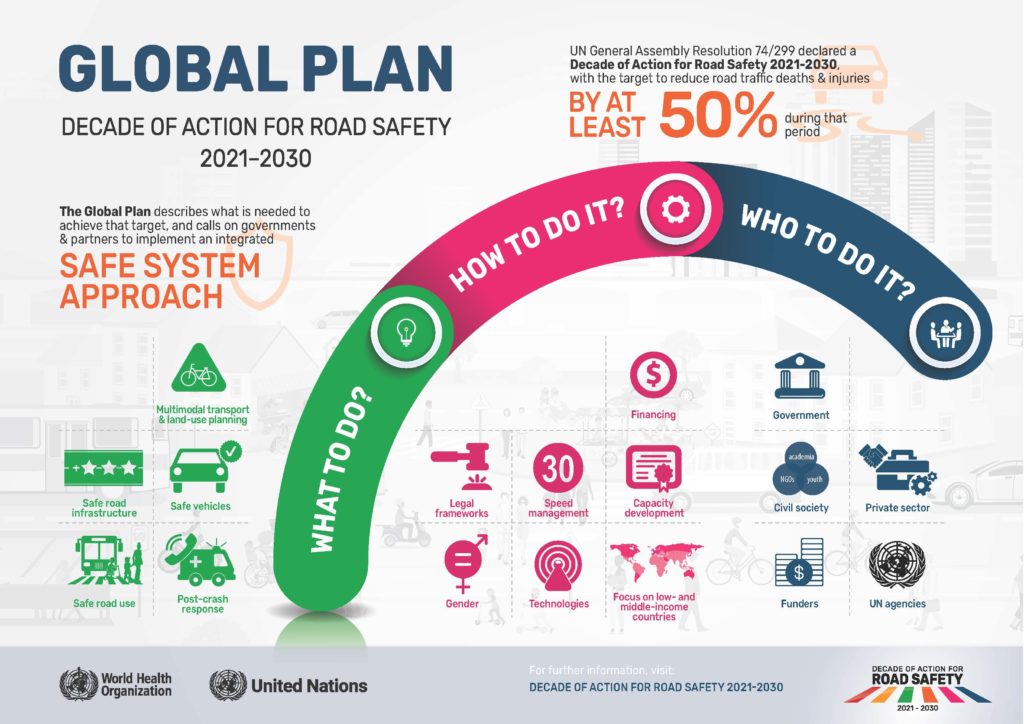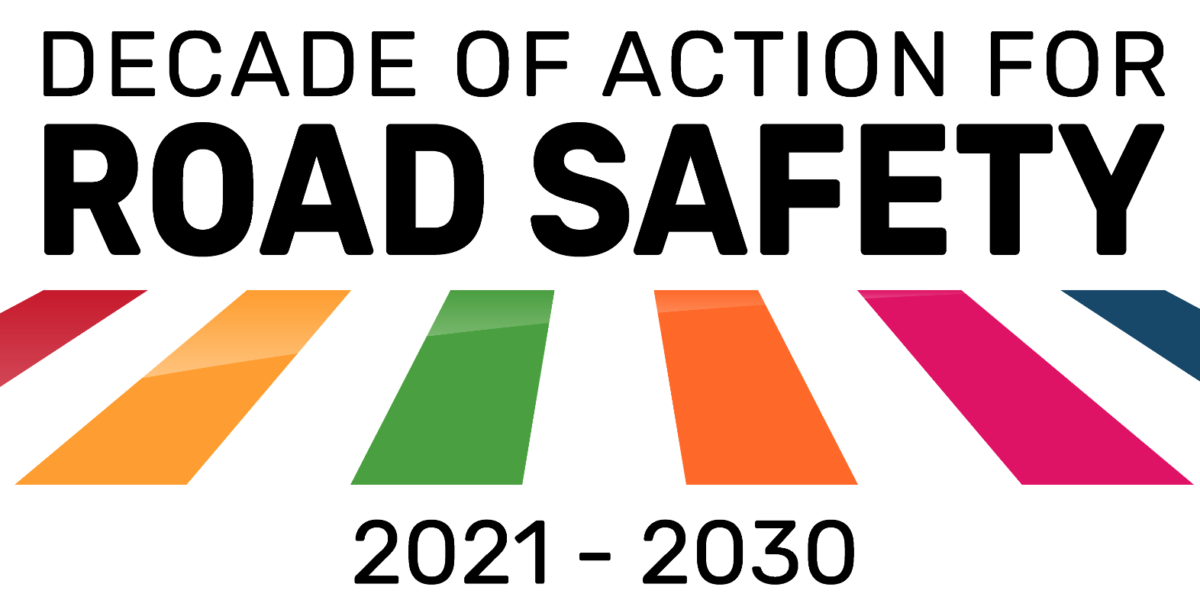Cutting road deaths by 50%
WHO launches a decade of action
‘Decade of Action for Road Safety 2021-2030’ was officially launched on 28 October. It has an ambitious target of preventing at least 50% of road traffic deaths and injuries by 2030.
The campaign has been set up by the World Health Organization (WHO) and the UN regional commissions. In cooperation with other partners in the UN Road Safety Collaboration, they have developed a Global Plan for the Decade of Action, published at the same time.
According to the WHO, says globally more than 3,500 people die every day on the roads. In total it amounts to nearly 1.3 million preventable deaths and an estimated 50 million injuries each year. This means that road deaths are the leading killer of children and young people worldwide.
Following this road of thought, road collisions are set to cause a further estimated 13 million deaths and 500 million injuries during the next decade. Those particularly affected are from low- and middle-income countries and the less fortunate in society generally.
WHO describes these as ‘unacceptable numbers, both in absolute and relative terms’.
The poor pay the most
“The loss of lives and livelihoods, the disabilities caused, the grief and pain, and the financial costs caused by road traffic crashes add up to an intolerable toll on families, communities, societies and health systems”. These are the comments of Dr Tedros Adhanom Ghebreyesus, WHO director-general speaking a the launch. He continues that much of this is “preventable, by making roads and vehicles safer, and by promoting safe walking, cycling and greater use of public transport”.
The ‘Global Plan’ attempts to provide practical, evidence-based steps that “all countries and communities can take to save lives”.
It describes the actions required to achieve the 50% target, including accelerated action to make walking, cycling and using public transport safe. Alongside this are the more tradition al themes of producing safer roads and vehicles, improving emergency response and care. Taking a more environmental approach, healthier and greener forms of transport accessible by all is essential.

Making real practical progress
The recommended actions are generally drawn from proven and effective interventions, as well as best practices for preventing road trauma. WHO says it is intended to be used as a blueprint to inform and inspire national and local plans. These can be tailored to local contexts, available resources and capacity.
These are aimed at senior policy-makers and other stakeholders. Civil society, academia, the private sector along with community and youth leaders need to get onboard.
“More than 50 million people have died on the world’s roads since the invention of the automobile,” states Dr Etienne Krug, director of WHO’s Department of the Social Determinants of Health. This is a huge figure even when compared to the likes of World War One or world health epidemics.
“It is time to put in action what we know works and shift to a much safer and healthier mode of transport. This new plan will lead countries onto a more sustainable path.”





